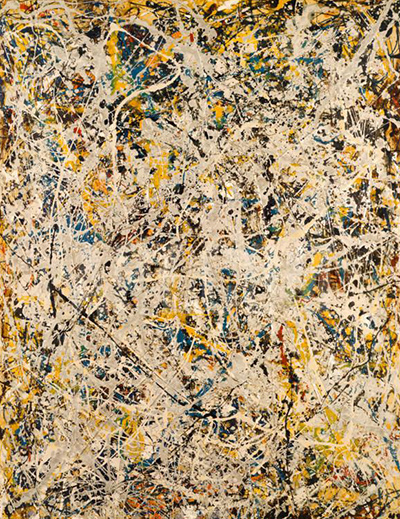Number 9 was painted by the famous American artist Jackson Pollock in 1949, and is a prime example of what was called his ‘action’ or ‘drip’ technique.
Paint is applied to the canvas without the medium of brush or other tool linking the artist with the canvas directly. Pollock dropped and poured paint onto the canvas whilst standing directly above it.
The colour palette is warm and the detail considerable, but at no time do the weaving lines of colour counteract or fight against each other. The overall effect is of a warm, light and uplifting expanse of swirling colour and light.
Pollock’s style was Abstract Expressionism and his techniques were sometimes criticised, derided and made suggestive of easy emulation. Nonetheless his work achieved considerable acclaim and in his lifetime Pollock was lauded as an enormous influence upon American contemporary art.
In 1948 Pollock began to title his works only with numbers. Number 9 was painted some two years after he execute what is given to be one of the first examples of this style, Galaxy of 1947.
By dropping or pouring paint onto the canvas Pollock freed himself from the constraints of defining form, and was able to truly express his emotions at the time of execution through abstract form.
The canvas is filled in what is termed Pollock’s ‘all over’ style, with no apparent ending to the imagery beyond the physical constraints of the size of the canvas.
Pollock's work bore similar themes to some of the Surrealists in that he was fascinated by psychodynamic theories by people such as Carl Jung, and strove to be released from the constraints of physical form, seeking true expression through the realisation of the psyche’s imagery in a process termed psychic automatism, a stream of consciousness process.
The result, as seen in Number 9, was far from the simple, almost child-like expressionism some critics level; it is a work of vast complexity, each component working in harmony to create the whole.




